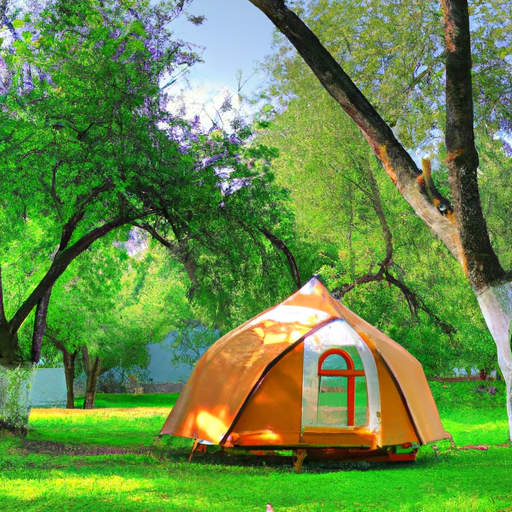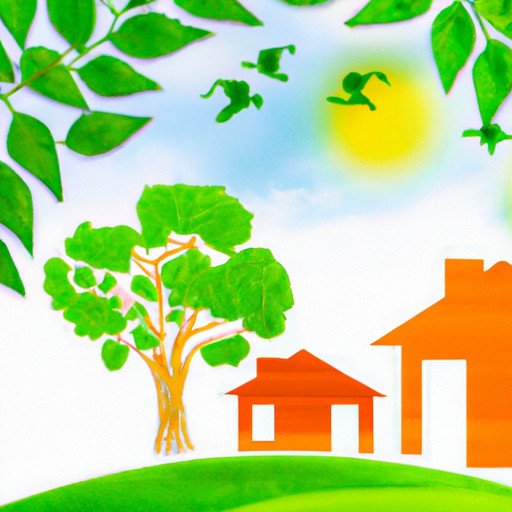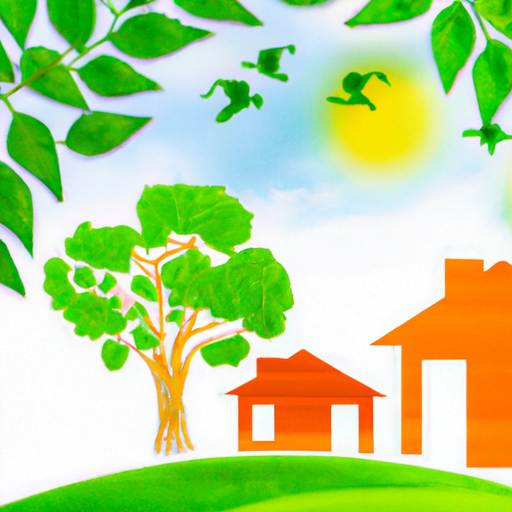Have you ever wondered what it would be like to live off-grid? To disconnect from the hustle and bustle of modern society and live a more self-sufficient and sustainable lifestyle? Well, you’re in luck because in this article, we will delve into the topic of off-grid living and discover the most affordable locations where you can make this lifestyle a reality. So if you’ve ever dreamed of escaping the confines of city life and embracing a simpler way of living, keep reading and find out where you can do so without breaking the bank.
When it comes to off-grid living, one of the most common questions that comes to mind is: Where is the cheapest place to do so? After all, one of the main motivations for choosing an off-grid lifestyle is to reduce living expenses and become more self-reliant. Luckily, there are numerous locations around the world where you can find affordable off-grid living options. From remote areas in Central America to rural communities in Eastern Europe, the possibilities are endless. In the next paragraphs, we will explore some of the most enticing and budget-friendly locations that offer the perfect balance between cost of living and off-grid amenities.
Whether you are a minimalist seeking solitude or a nature enthusiast yearning for a deeper connection with the environment, there is an off-grid location for everyone. In our quest for the most affordable off-grid living options, we will take into consideration factors such as cost of land, availability of resources, and community support. So if you’re ready to discover where you can make your off-grid dreams come true, continue reading and embark on a journey to find the perfect affordable off-grid living location for you.

Introduction to Off-Grid Living
Off-grid living refers to the lifestyle of living without reliance on public utilities and infrastructure such as electricity, water, and sewage systems. It is a growing movement that aims to reduce one’s carbon footprint, increase self-sufficiency, and embrace a simpler, more sustainable way of life.
What is off-grid living?
Off-grid living involves generating your own electricity through renewable energy sources like solar panels or wind turbines, collecting and storing rainwater for personal use, and utilizing composting toilets or septic systems instead of relying on central sewage systems. It also often involves growing your own food, minimizing waste, and reducing consumption.
Advantages of off-grid living
There are several advantages to off-grid living, including increased self-sufficiency, reduced reliance on fossil fuels, lower utility bills, and a smaller environmentally-friendly footprint. Living off-grid also allows individuals or families the opportunity to disconnect from the hustle and bustle of city life and reconnect with nature, leading to a more peaceful and harmonious lifestyle.
Why people choose off-grid living
People choose off-grid living for a variety of reasons. Some are driven by a desire to live a more sustainable lifestyle and reduce their impact on the environment. Others seek the freedom and independence that comes with generating their own electricity and water. Additionally, some individuals are drawn to the simplicity and peace that off-grid living offers, away from the stress and noise of modern society.
Factors to Consider When Choosing Off-Grid Living Locations
When considering off-grid living, there are several important factors to take into account before deciding on a suitable location.
Cost of land
One of the first considerations is the cost of land. Different regions vary significantly in terms of land prices, so it is essential to research and compare the affordability of potential locations.
Climate and weather conditions
Climate and weather conditions play a crucial role in off-grid living. Some regions may have extreme temperatures, which could impact the effectiveness of renewable energy systems or the ability to grow crops. Identifying a location with a favorable climate for sustainable living is vital.
Availability of resources
Access to resources such as water, timber for construction, and fertile soil for farming is essential for off-grid living. It is important to choose a location where these resources are readily available without causing harm to the environment.
Access to medical facilities
Another factor to consider is access to medical facilities. Living off-grid often means being further away from hospitals and healthcare services. It is crucial to choose a location with reasonable access to medical facilities in case of emergencies.
Community and social aspects
Living off-grid does not necessarily mean complete isolation. Some people prefer to be part of a like-minded community, where they can share resources, knowledge, and experiences. Considering the social aspect and the availability of like-minded individuals can enhance the off-grid living experience.

Exploring Affordable Off-Grid Living Locations
There are several affordable off-grid living locations across the globe. Each region offers unique opportunities and challenges for those seeking an alternative lifestyle.
Southwestern United States
The Southwestern United States, including states like New Mexico and Arizona, has become a popular destination for off-grid living. With abundant sunshine and vast open spaces, it presents an ideal environment for solar power. Land prices are relatively affordable, and there is a vibrant off-grid community thriving in this region.
Central and South America
Central and South America offer a range of affordable off-grid living options. Countries like Ecuador, Costa Rica, and Nicaragua provide ample land and favorable climates for sustainable living. Additionally, the cost of living is relatively low compared to many Western countries, making these regions attractive for those seeking an affordable off-grid lifestyle.
Southeast Asia
Southeast Asia, including countries like Thailand, Philippines, and Indonesia, encompasses diverse landscapes and cultures. It is a region where off-grid living can be both affordable and rewarding. With a mild climate, an abundance of natural resources, and a low cost of living, Southeast Asia offers enticing opportunities for sustainable living.
Eastern Europe
Eastern Europe, including countries like Romania, Bulgaria, and Ukraine, has seen a rise in off-grid living communities. With vast stretches of land and a rich cultural heritage, this region offers affordable land prices and a tranquil setting for those seeking a self-sufficient lifestyle.
Africa
Africa presents unique off-grid living opportunities for those looking to connect with nature. Countries like Tanzania, Kenya, and Madagascar offer affordable land prices, favorable climates, and an abundance of natural resources. Off-grid living in Africa can be a truly transformative experience.
Conclusion
Off-grid living has gained popularity as more people seek alternatives to the fast-paced, consumer-driven lifestyle. The most affordable off-grid living locations offer a combination of affordable land prices, favorable weather conditions, access to resources, and vibrant off-grid communities. Whether it is in the Southwestern United States, Central and South America, Southeast Asia, Eastern Europe, or Africa, off-grid living provides an opportunity to reconnect with nature, live sustainably, and embrace a simpler way of life.
Summary of affordable off-grid living locations
The Southwestern United States, Central and South America, Southeast Asia, Eastern Europe, and Africa are all regions with affordable off-grid living opportunities. Each region offers unique advantages and challenges, but all provide the chance to live a more sustainable and self-sufficient lifestyle.
Factors to consider when choosing a location
When choosing an off-grid living location, factors to consider include the cost of land, climate, availability of resources, access to medical facilities, and the social aspect of living in a community. Taking these factors into account will help ensure a successful off-grid living experience.
The future of off-grid living
As the world becomes more conscious of the importance of sustainability and self-sufficiency, off-grid living is likely to continue to grow in popularity. With advancements in technology and increasing accessibility to renewable energy sources, the future of off-grid living looks promising. It offers a chance to reduce our impact on the environment and embrace a more mindful and fulfilling way of life.




